Eight Plus One Books Every Safety Manager Should Read In 2022
“When you repeat a mistake, it’s not a mistake anymore. It’s a decision.”
— Paul Coelho.
Reading and learning should be part of every safety manager’s daily habits as the world is getting more fast-paced and unpredictable. The best safety managers don’t just focus on their industry or safety-related expertise. Their work covers so many areas that they know they need to internalise multiple different topics.
The difficult part is to choose the books to read as there are more business books than safety managers. These books, which cover topics such as checklists, learning from failure (incident reporting) and institutionalising organisational habits, are a perfect way to get started on your journey to become a more effective safety manager.
1. Black Box Thinking
All safety managers know how important incident and near miss reporting is whether they are operating in Aviation, Healthcare, Manufacturing or Retail. In Black Box Thinking, Matthew Syed dives deep into why we humans find it so hard to learn from (or even admit) our mistakes. As the author explores, the biggest barriers to learning from failures are rooted in psychology and organisational culture.
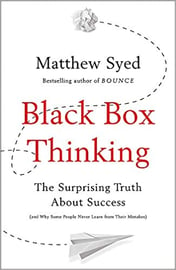
2. Checklist Manifesto
Atul Gawande, a surgeon by profession, does a masterful job explaining from one field to another why under conditions of complexity, not only are checklists a help, they are required for success. This book will give you the reasoning why you need checklists for your organisation’s safety walks, inspections and procedures. Our favourite line from the book: checklists improve results without adding skills.
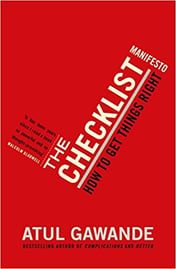
3. Adapt
Author of several bestselling books, Tim Harford shows how top-down and expert-opinion driven approach is not enough in today’s unpredictable and ever-shifting world whether the issue is climate change, safety management or poverty. Rather we must take small steps, improvise, experiment, learn on-the-go, work from the bottom up — in other words, we must adapt. All safety managers, who find it hard to engage their entire organisation to incident reporting, should pay attention when reading this book.
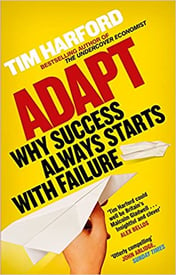
4. Power of Habit
In one of the best business books in 2014, award-winning business reporter Charles Duhigg describes how habits, either personal or organisational, get formed and why it’s so hard to change them. The book contains one of the most famous case studies ever in safety management about Paul O'Neill taking over Alcoa. Instead of satisfying the questions of Wall Street, he attacked straight away the safety practices and especially the habit of reporting incidents. By fixing this organisational keystone habit spread elsewhere and turned Alcoa from near bankruptcy to great success.
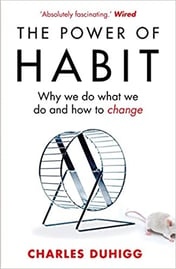
5. Deep Work
With increasingly more distractions in the connected age, employees in almost every industry face problems with focused work. In Deep Work, author and professor Cal Newport clarifies the concept of Deep Work, the ability to focus without distraction on a cognitively demanding task. Why should safety manager’s pay attention to this? By practicing deep work, they will be better at what they do. By respecting the concept in their coworkers, they’ll have better leverage with processes such as incident reporting, training and audits.
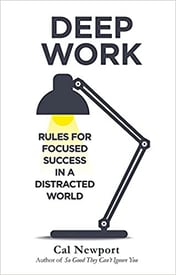
6. Failure of Risk Management
This book is already more than 10 years old but it’s still as valid now as it was back then. In Failure of Risk Management, Douglas W. Hubbard examines why risk management is ever more important and why most of the popular risk assessments methods don’t work. All safety management involves understanding and managing risks. This is the go-to-book for getting your safety management inline with risk management.
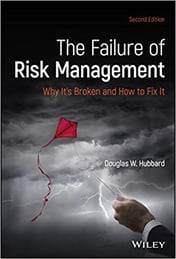
7. From Accidents to Zero
Professor Andrew Sharman’s From Accidents to Zero, is a concise book to keep in your briefcase at all times and have great reminders of the most important concepts in health and safety. Here’s a short summary of the book.
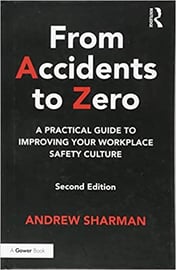
Bonus: Accidents, Causes, Investigation and Prevention
No safety manager wants accidents to reoccur in the workplace. That’s why structured learning and practice of investigating all injuries and near misses is so important. In Accidents, Causes, Investigation and Prevention, Doctor James Thornhill takes a deep dive into accident investigation procedures. Here’s a quick three-minute summary of the book.

Bonus: Ultimate Guide To Safety (Involvement) KPIs
We might be biased to promote our own content, but if you are interested to learn more about safety metrics and KPIs, our FREE guide has got you covered.
We are building the world's first operational involvement platform. Our mission is to make the process of finding, sharing, fixing and learning from issues and observations as easy as thinking about them and as rewarding as being remembered for them.
By doing this, we are making work more meaningful for all parties involved.
More information at falcony.io.

Related posts
From Accidents to Zero by Andrew Sharman: Summary & Ideas
From Accidents to Zero by Andrew Sharman is a concise and easy to read from A to Z manual for any...
Accidents, causes, investigation and prevention: book summary
Accidents: causes, investigation and prevention by Doctor James Thornhill is an introductory book...
How Internal Communications Can Improve Work Environment and Safety Management
Internal communications is a fuzzy topic, especially in work environment and safety management....




